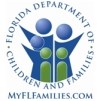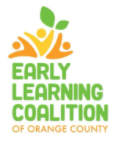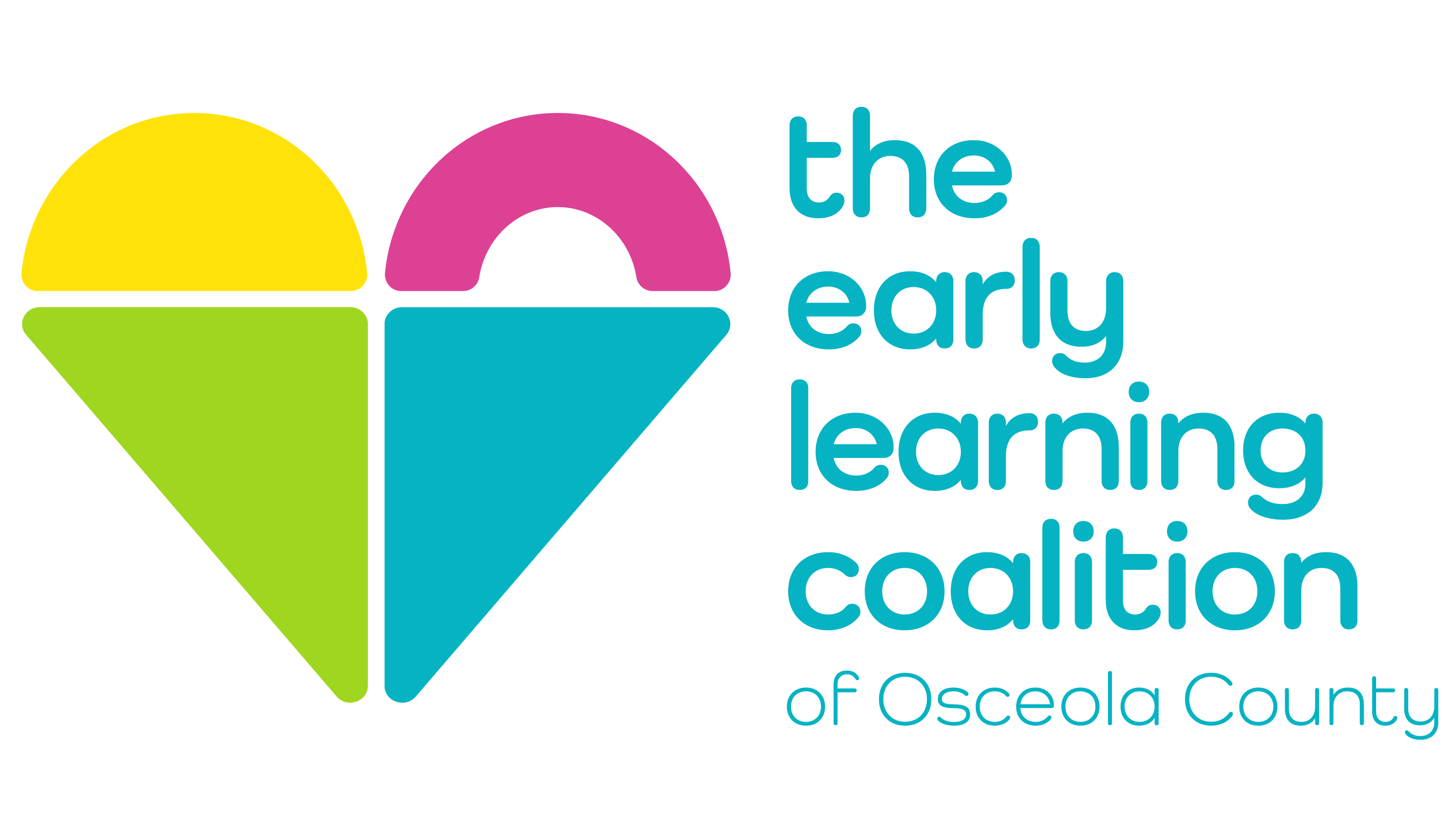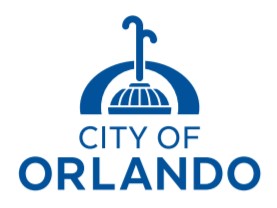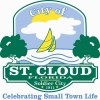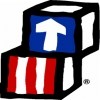What is developmental screening and why is it important?
Developmental delays and disabilities often go undetected until a child enters elementary school. Multiple studies have shown that the earlier a delay is recognized and supports offered the better a child has of making substantial improvement. Screening young children is an effective way to gauge developmental progress during a child’s first years of life and to determine any necessary action at a time when it can have its greatest impact.
The Ages and Stages Questionnaire is the developmental screening tool used for all children ages 1 month through 5 1/2 years who participate in the School Readiness program in Orange County. It takes the form of a series of questions used to track children’s development relative to milestones achieved by a larger group of children of the same age.
Anyone who works with infants and young children can play an important role in the early identification of developmental delays. In the case of the ASQ3, parents or child care providers answer a series of simple questions used to track a child’s abilities (Does your child climb on an object such as a chair to reach something he wants? When your child wants something, does she tell you by pointing to it?). If a child is identified as having a potential delay, additional supports are offered in the form of learning activities, additional screenings, and community resources for further evaluation, assessment and/or therapy.
The ASQ3 is not a test. Screening is not meant to establish a diagnosis for a child, but rather to help determine whether more in-depth assessment is the next step. It does not determine if your child is gifted, has learning disabilities, medical conditions or emotional disorders.
Hearing and vision are important for learning success. Hearing properly is an important part of learning speech and language. If hearing loss goes unnoticed, delays in speech and language learning can occur. Being able to see clearly will help a child learn how to focus on people and objects, and begins the learning process of identifying and linking sounds to words to broader concepts.
Through participation in the School Readiness program, children who are not yet in school will have the opportunity to have both hearing and vision screens. The screenings are completed by trained Early Intervention Specialists and performed at your child care provider’s facility using the EroScan Hearing Screener and Wyeth SPOT Vision Screener. Both the EroScan and SPOT are able provide screenings in less than one minute.
Community Resources are available to assist with different types of medical concerns. Please click on the links below for further information and assistance near you:
How your child plays, learns, speaks, and acts offers important clues about your child’s development. Developmental milestones are things most children can do by a certain age.
Check the milestones your child has reached by his or her 1st birthday. Take this with you and talk with your child’s doctor at every visit about the milestones your child has reached and what to expect next.
What most children do at this age:
Social and Emotional
• Is shy or nervous with strangers
• Cries when mom or dad leaves
• Has favorite things and people
• Shows fear in some situations
• Hands you a book when he wants to hear a story
• Repeats sounds or actions to get attention
• Puts out arm or leg to help with dressing
• Plays games such as “peek-a-boo” and “pat-a-cake”
Language/Communication
• Responds to simple spoken requests
• Uses simple gestures, like shaking head “no” or waving “bye-bye”
• Makes sounds with changes in tone (sounds more like speech)
• Says “mama” and “dada” and exclamations like “uh-oh!”
• Tries to say words you say
Cognitive (learning, thinking, problem-solving)
• Explores things in different ways, like shaking, banging, throwing
• Finds hidden things easily
• Looks at the right picture or thing when it’s named
• Copies gestures
• Starts to use things correctly; for example, drinks from a cup, brushes hair
• Bangs two things together
• Puts things in a container, takes things out of a container
• Lets things go without help
• Pokes with index (pointer) finger
• Follows simple directions like “pick up the toy”
Movement/Physical Development
• Gets to a sitting position without help
• Pulls up to stand, walks holding on to furniture (“cruising”)
• May take a few steps without holding on
• May stand alone
Act early by talking to your child’s doctor if your child:
• Doesn’t crawl
• Can’t stand when supported
• Doesn’t search for things that she sees you hide
• Doesn’t say single words like “mama” or “dada”
• Doesn’t learn gestures like waving or shaking head
• Doesn’t point to things
• Loses skills he once had
Positive Parenting Tips
Following are some of the things you, as a parent, can do to help your toddler during this time:
• Read to your toddler daily.
• Ask her to find objects for you or name body parts and objects.
• Play matching games with your toddler, like shape sorting and simple puzzles.
• Encourage him to explore and try new things.
• Help to develop your toddler’s language by talking with her and adding to words she starts. For example, if your toddler says “baba”, you can respond, “Yes, you are right―that is a bottle.”
• Encourage your child’s growing independence by letting him help with dressing himself and feeding himself.
• Respond to wanted behaviors more than you punish unwanted behaviors (use only very brief time outs). Always tell or show your child what she should do instead.
• Encourage your toddler’s curiosity and ability to recognize common objects by taking field trips together to the park or going on a bus ride.
How your child plays, learns, speaks, and acts offers important clues about your child’s development. Developmental milestones are things most children can do by a certain age.
Check the milestones your child has reached by the end of 18 months. Take this with you and talk with your child’s doctor at every visit about the milestones your child has reached and what to expect next.
What most babies do at this age:
Social and Emotional
• Likes to hand things to others as play
• May have temper tantrums
• May be afraid of strangers
• Shows affection to familiar people
• Plays simple pretend, such as feeding a doll
• May cling to caregivers in new situations
• Points to show others something interesting
• Explores alone but with parent close by
Language/Communication
• Says several single words
• Says and shakes head “no”
• Points to show someone what he wants
Cognitive (learning, thinking, problem-solving)
• Knows what ordinary things are for; for example, telephone, brush, spoon
• Points to get the attention of others
• Shows interest in a doll or stuffed animal by pretending to feed
• Points to one body part
• Scribbles on his own
• Can follow 1-step verbal commands without any gestures; for example, sits when you say “sit down”
Movement/Physical Development
• Walks alone
• May walk up steps and run
• Pulls toys while walking
• Can help undress herself
• Drinks from a cup
• Eats with a spoon
Act early by talking to your child’s doctor if your child:
• Doesn’t point to show things to others
• Can’t walk
• Doesn’t know what familiar things are for
• Doesn’t copy others
• Doesn’t gain new words
• Doesn’t have at least 6 words
• Doesn’t notice or mind when a caregiver leaves or returns
• Loses skills he once had
Positive Parenting Tips
Following are some of the things you, as a parent, can do to help your toddler during this time:
• Read to your toddler daily.
• Ask her to find objects for you or name body parts and objects.
• Play matching games with your toddler, like shape sorting and simple puzzles.
• Encourage him to explore and try new things.
• Help to develop your toddler’s language by talking with her and adding to words she starts. For example, if your toddler says “baba”, you can respond, “Yes, you are right―that is a bottle.”
• Encourage your child’s growing independence by letting him help with dressing himself and feeding himself.
• Respond to wanted behaviors more than you punish unwanted behaviors (use only very brief time outs). Always tell or show your child what she should do instead.
• Encourage your toddler’s curiosity and ability to recognize common objects by taking field trips together to the park or going on a bus ride.
How your child plays, learns, speaks, and acts offers important clues about your child’s development. Developmental milestones are things most children can do by a certain age.
Check the milestones your child has reached by his or her 2nd birthday. Take this with you and talk with your child’s doctor at every visit about the milestones your child has reached and what to expect next.
What most babies do at this age:
Social and Emotional
• Copies others, especially adults and older children
• Gets excited when with other children
• Shows more and more independence
• Shows defiant behavior (doing what he has been told not to)
• Plays mainly beside other children, but is beginning to include other children, such as in chase games
Language/Communication
• Points to things or pictures when they are named
• Knows names of familiar people and body parts
• Says sentences with 2 to 4 words
• Follows simple instructions
• Repeats words overheard in conversation
• Points to things in a book
Cognitive (learning, thinking, problem-solving)
• Finds things even when hidden under two or three covers
• Begins to sort shapes and colors
• Completes sentences and rhymes in familiar books
• Plays simple make-believe games
• Builds towers of 4 or more blocks
• Might use one hand more than the other
• Follows two-step instructions such as “Pick up your shoes and put them in the closet.”
• Names items in a picture book such as a cat, bird, or dog
Movement/Physical Development
• Stands on tiptoe
• Kicks a ball
• Begins to run
• Climbs onto and down from furniture without help
• Walks up and down stairs holding on
• Throws ball overhand
• Makes or copies straight lines and circles
Act early by talking to your child’s doctor if your child:
• Doesn’t use 2-word phrases (for example, “drink milk”)
• Doesn’t know what to do with common things, like a brush, phone, fork, spoon
• Doesn’t copy actions and words
• Doesn’t follow simple instructions
• Doesn’t walk steadily
• Loses skills she once had
Positive Parenting Tips
Following are some of the things you, as a parent, can do to help your toddler during this time:
• Set up a special time to read books with your toddler.
• Encourage your child to take part in pretend play.
• Play parade or follow the leader with your toddler.
• Help your child to explore things around her by taking her on a walk or wagon ride.
• Encourage your child to tell you his name and age.
• Teach your child simple songs like Itsy Bitsy Spider, or other cultural childhood rhymes.
• Give your child attention and praise when she follows instructions and shows positive behavior and limit attention for defiant behavior like tantrums. Teach your child acceptable ways to show that she’s upset.
How your child plays, learns, speaks, and acts offers important clues about your child’s development. Developmental milestones are things most children can do by a certain age.
Check the milestones your child has reached by his or her 3rd birthday. Take this with you and talk with your child’s doctor at every visit about the milestones your child has reached and what to expect next.
What most babies do at this age:
Social and Emotional
• Copies adults and friends
• Shows affection for friends without prompting
• Takes turns in games
• Shows concern for crying friend
• Understands the idea of “mine” and “his” or “hers”
• Shows a wide range of emotions
• Separates easily from mom and dad
• May get upset with major changes in routine
• Dresses and undresses self
Language/Communication
• Follows instructions with 2 or 3 steps
• Can name most familiar things
• Understands words like “in,” “on,” and “under”
• Says first name, age, and sex
• Names a friend
• Says words like “I,” “me,” “we,” and “you” and some plurals (cars, dogs, cats)
• Talks well enough for strangers to understand most of the time
• Carries on a conversation using 2 to 3 sentences
Cognitive (learning, thinking, problem-solving)
• Can work toys with buttons, levers, and moving parts
• Plays make-believe with dolls, animals, and people
• Does puzzles with 3 or 4 pieces
• Understands what “two” means
• Copies a circle with pencil or crayon
• Turns book pages one at a time
• Builds towers of more than 6 blocks
• Screws and unscrews jar lids or turns door handle
Movement/Physical Development
• Climbs well
• Runs easily
• Pedals a tricycle (3-wheel bike)
• Walks up and down stairs, one foot on each step
Act early by talking to your child’s doctor if your child:
• Falls down a lot or has trouble with stairs
• Drools or has very unclear speech
• Can’t work simple toys (such as peg boards, simple puzzles, turning handle)
• Doesn’t speak in sentences
• Doesn’t understand simple instructions
• Doesn’t play pretend or make-believe
• Doesn’t want to play with other children or with toys
• Doesn’t make eye contact
• Loses skills he once had
Positive Parenting Tips
Following are some of the things you, as a parent, can do to help your preschooler during this time:
• Continue to read to your child. Nurture her love for books by taking her to the library or bookstore.
• Let your child help with simple chores.
• Encourage your child to play with other children. This helps him to learn the value of sharing and friendship.
• Be clear and consistent when disciplining your child. Explain and show the behavior that you expect from her. Whenever you tell her no, follow up with what he should be doing instead.
• Help your child develop good language skills by speaking to him in complete sentences and using “grown up” words. Help him to use the correct words and phrases.
• Help your child through the steps to solve problems when she is upset.
• Give your child a limited number of simple choices (for example, deciding what to wear, when to play, and what to eat for snack).
How your child plays, learns, speaks, and acts offers important clues about your child’s development. Developmental milestones are things most children can do by a certain age.
Check the milestones your child has reached by his or her 4th birthday. Take this with you and talk with your child’s doctor at every visit about the milestones your child has reached and what to expect next.
What most babies do at this age:
Social and Emotional
• Enjoys doing new things
• Plays “Mom” and “Dad”
• Is more and more creative with make-believe play
• Would rather play with other children than by himself
• Cooperates with other children
• Often can’t tell what’s real and what’s make-believe
• Talks about what she likes and what she is interested in
Language/Communication
• Knows some basic rules of grammar, such as correctly using “he” and “she”
• Sings a song or says a poem from memory such as the “Itsy Bitsy Spider” or the “Wheels on the Bus”
• Tells stories
• Can say first and last name
Cognitive (learning, thinking, problem-solving)
• Names some colors and some numbers
• Understands the idea of counting
• Starts to understand time
• Remembers parts of a story
• Understands the idea of “same” and “different”
• Draws a person with 2 to 4 body parts
• Uses scissors
• Starts to copy some capital letters
• Plays board or card games
• Tells you what he thinks is going to happen next in a book
Movement/Physical Development
• Hops and stands on one foot up to 2 seconds
• Catches a bounced ball most of the time
• Pours, cuts with supervision, and mashes own food
Act early by talking to your child’s doctor if your child:
• Can’t jump in place
• Has trouble scribbling
• Shows no interest in interactive games or make-believe
• Ignores other children or doesn’t respond to people outside the family
• Resists dressing, sleeping, and using the toilet
• Can’t retell a favorite story
• Doesn’t follow 3-part commands
• Doesn’t understand “same” and “different”
• Doesn’t use “me” and “you” correctly
• Speaks unclear
• Loses skills he once had
Positive Parenting Tips
Following are some of the things you, as a parent, can do to help your preschooler during this time:
• Continue to read to your child. Nurture her love for books by taking her to the library or bookstore.
• Let your child help with simple chores.
• Encourage your child to play with other children. This helps him to learn the value of sharing and friendship.
• Be clear and consistent when disciplining your child. Explain and show the behavior that you expect from her. Whenever you tell her no, follow up with what he should be doing instead.
• Help your child develop good language skills by speaking to him in complete sentences and using “grown up” words. Help him to use the correct words and phrases.
• Help your child through the steps to solve problems when she is upset.
• Give your child a limited number of simple choices (for example, deciding what to wear, when to play, and what to eat for snack).
How your child plays, learns, speaks, and acts offers important clues about your child’s development. Developmental milestones are things most children can do by a certain age.
Check the milestones your child has reached by his or her 5th birthday. Take this with you and talk with your child’s doctor at every visit about the milestones your child has reached and what to expect next.
What most babies do at this age:
Social and Emotional
• Wants to please friends
• Wants to be like friends
• More likely to agree with rules
• Likes to sing, dance, and act
• Shows concern and sympathy for others
• Is aware of gender
• Can tell what’s real and what’s make-believe
• Shows more independence (for example, may visit a next-door neighbor by himself [adult supervision is still needed])
• Is sometimes demanding and sometimes very cooperative
Language/Communication
• Speaks very clearly
• Tells a simple story using full sentences
• Uses future tense; for example, “Grandma will be here.”
• Says name and address
Cognitive (learning, thinking, problem-solving)
• Counts 10 or more things
• Can draw a person with at least 6 body parts
• Can print some letters or numbers
• Copies a triangle and other geometric shapes
• Knows about things used every day, like money and food
Movement/Physical Development
• Stands on one foot for 10 seconds or longer
• Hops; may be able to skip
• Can do a somersault
• Uses a fork and spoon and sometimes a table knife
• Can use the toilet on her own
• Swings and climbs
Act early by talking to your child’s doctor if your child:
• Doesn’t show a wide range of emotions
• Shows extreme behavior (unusually fearful, aggressive, shy or sad)
• Unusually withdrawn and not active
• Is easily distracted, has trouble focusing on one activity for more than 5 minutes
• Doesn’t respond to people, or responds only superficially
• Can’t tell what’s real and what’s make-believe
• Doesn’t play a variety of games and activities
• Can’t give first and last name
• Doesn’t use plurals or past tense properly
• Doesn’t talk about daily activities or experiences
• Doesn’t draw pictures
• Can’t brush teeth, wash and dry hands, or get undressed without help
• Loses skills he once had
Positive Parenting Tips
Following are some of the things you, as a parent, can do to help your preschooler during this time:
• Continue to read to your child. Nurture her love for books by taking her to the library or bookstore.
• Let your child help with simple chores.
• Encourage your child to play with other children. This helps him to learn the value of sharing and friendship.
• Be clear and consistent when disciplining your child. Explain and show the behavior that you expect from her. Whenever you tell her no, follow up with what he should be doing instead.
• Help your child develop good language skills by speaking to him in complete sentences and using “grown up” words. Help him to use the correct words and phrases.
• Help your child through the steps to solve problems when she is upset.
• Give your child a limited number of simple choices (for example, deciding what to wear, when to play, and what to eat for snack).
Download these milestone checklists and other information to help gauge your child’s developmental during their first years of life:
Centers for Disease Control and Prevention
(in English and Spanish):
2 months old | 4 months old | 6 months old
9 months old | 1 year old | 18 months old
2 years old | 3 years old | 4 years old | 5 years old
Milestones Info Card | How To Help Your Child
Milestones in Creole
Zero To Three
A national nonprofit that provides early development information.
0 to 3 months old in English or Spanish
3 to 6 months old English or Spanish
6 to 9 month olds in English or Spanish
9 to 12 months old in English or Spanish
12 to 15 months old in English or Spanish
15 to 18 months old in English or Spanish
18 to 24 months old in English or Spanish
24 to 30 months old in English or Spanish
30 to 36 months old in English or Spanish
For additional information on Child Growth & Development, please click the links below:
Zero to Three
National Center for Infants, Toddlers and Families
www.zerotothree.org
Pathways.org
https://pathways.org/
Get Ready to Read
http://www.getreadytoread.org/
Florida Department of Education
http://www.fldoe.org/
Understood
https://www.understood.org/en
Florida KidCare
https://www.floridakidcare.org/
Kids Health from Nemours
www.kidshealth.org
Florida Department of Children and Families
http://www.myflfamilies.com/
CDC
Centers for Disease Control and Prevention – Child Development
http://www.cdc.gov/ncbddd/childdevelopment/index.html
Please contact 4C Early Intervention with any questions regarding the School Readiness developmental and hearing and vision screening process or with any other questions or concerns you may have regarding your child’s healthy development.
Orange County
Early Intervention Assistant: 407-532-4534

